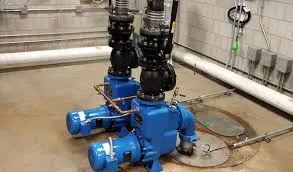Estonian
- Afrikaans
- Albanian
- Amharic
- Arabic
- Armenian
- Azerbaijani
- Basque
- Belarusian
- Bengali
- Bosnian
- Bulgarian
- Catalan
- Cebuano
- Corsican
- Croatian
- Czech
- Danish
- Dutch
- English
- Esperanto
- Estonian
- Finnish
- French
- Frisian
- Galician
- Georgian
- German
- Greek
- Gujarati
- Haitian Creole
- hausa
- hawaiian
- Hebrew
- Hindi
- Miao
- Hungarian
- Icelandic
- igbo
- Indonesian
- irish
- Italian
- Japanese
- Javanese
- Kannada
- kazakh
- Khmer
- Rwandese
- Korean
- Kurdish
- Kyrgyz
- Lao
- Latin
- Latvian
- Lithuanian
- Luxembourgish
- Macedonian
- Malgashi
- Malay
- Malayalam
- Maltese
- Maori
- Marathi
- Mongolian
- Myanmar
- Nepali
- Norwegian
- Norwegian
- Occitan
- Pashto
- Persian
- Polish
- Portuguese
- Punjabi
- Romanian
- Russian
- Samoan
- Scottish Gaelic
- Serbian
- Sesotho
- Shona
- Sindhi
- Sinhala
- Slovak
- Slovenian
- Somali
- Spanish
- Sundanese
- Swahili
- Swedish
- Tagalog
- Tajik
- Tamil
- Tatar
- Telugu
- Thai
- Turkish
- Turkmen
- Ukrainian
- Urdu
- Uighur
- Uzbek
- Vietnamese
- Welsh
- Bantu
- Yiddish
- Yoruba
- Zulu
Telephone: +86 13120555503
Email: frank@cypump.com
aug. . 30, 2024 13:56 Back to list
Slurry Pump Manual | Efficient Slurry Handling Solutions
Understanding Slurry Pumps A Comprehensive Guide
Slurry pumps are essential engineering tools designed to handle a mixture of liquid and solid particles, known as slurry. These pumps find their application in various industries, including mining, metallurgy, construction, and wastewater management. Their unique design allows them to transport heavy and abrasive materials, making them crucial for processes that involve high-density mixtures.
Design and Components
The effectiveness of slurry pumps stems from their specialized design. They typically feature a robust casing that can withstand the wear and tear from solid particles. A key component of these pumps is the impeller, which is optimally shaped to create the necessary pressure and flow to move the slurry. The pump materials are often chosen based on the nature of the slurry being handled. For instance, materials resistant to corrosion and wear, such as high-chrome alloys or rubber linings, are frequently employed to increase the pump's longevity.
Types of Slurry Pumps
There are various types of slurry pumps, each designed for specific applications. The most common types include
1. Centrifugal Slurry Pumps These pumps use centrifugal force to move the slurry. They are widely used due to their efficiency in transferring low to moderate slurry concentrations.
2. Positive Displacement Pumps These pumps work by trapping a fixed amount of slurry and forcing it into the discharge pipe. They are ideal for high-viscosity slurries and provide a consistent flow rate regardless of the pressure.
slurry pump manual

3. Submersible Slurry Pumps As the name suggests, these pumps operate submerged in the slurry. They are particularly effective in dewatering and are often utilized in construction sites and mining operations.
Operation and Maintenance
Proper operation and maintenance of slurry pumps are critical to ensure their efficiency and longevity. When operating a slurry pump, it is essential to monitor its performance regularly. This includes checking for wear on the impeller and casing, ensuring the seals are intact, and confirming that the pump is not operating under conditions that could lead to cavitation, which can severely damage the pump components.
Routine maintenance should include flushing the pump to remove any build-up of solids, inspecting the bearings, and replacing worn parts as needed. A well-maintained slurry pump can last significantly longer and operate more efficiently than one that is neglected.
Applications of Slurry Pumps
Slurry pumps are versatile and can be found in various applications. In the mining industry, they are used to transport ore and tailings. In construction, they help manage cement slurries and excavated materials. Wastewater treatment facilities also utilize slurry pumps to handle sludge efficiently.
In conclusion, slurry pumps are vital for industries that deal with abrasive and heavy materials. Understanding their design, types, and maintenance is crucial for optimizing their performance and ensuring the smooth operation of various industrial processes. As technologies continue to evolve, the efficiency and capabilities of slurry pumps will likely improve, further enhancing their role in modern engineering applications.
-
Horizontal Split Case Pump with GPT-4 Turbo | High Efficiency
NewsAug.01,2025
-
ISG Series Pipeline Pump - Chi Yuan Pumps | High Efficiency, Durable Design
NewsAug.01,2025
-
Advanced Flue Gas Desulfurization Pump with GPT-4 Turbo | Durable & Efficient
NewsJul.31,2025
-
ISG Series Vertical Pipeline Pump - Chi Yuan Pumps | Advanced Hydraulic Design&Durable Construction
NewsJul.31,2025
-
ISG Series Vertical Pipeline Pump - Chi Yuan Pumps | Energy Efficient & Low Noise
NewsJul.31,2025
-
pipeline pump - Chi Yuan Pumps Co., LTD.|High Efficiency&Low Noise
NewsJul.31,2025










